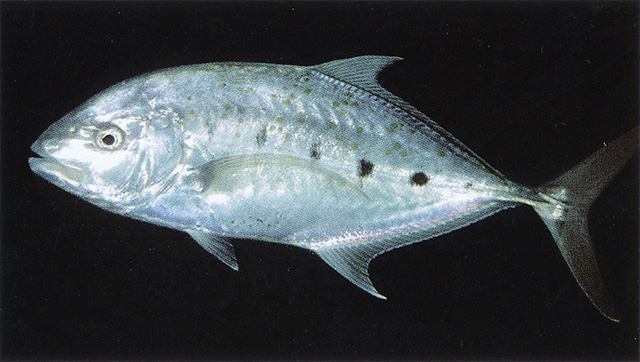| Carangidae (Jacks and pompanos), subfamily: Caranginae |
| 120 cm FL (male/unsexed); max.weight: 18 kg |
|
reef-associated; depth range - 100 m |
| Indo-West Pacific: Red Sea and the East Africa to Palau and New Caledonia, north to Ryukyu and Ogasawara islands (Ref. 559, 26066), south to Australia. Recently reported from Tonga (Ref. 53797). |
|
Dorsal spines (total): 9-9; Dorsal soft rays (total): 25-30; Anal spines: 3-3; Anal soft rays: 21-26. Description: Blue green above, silvery below; with numerous small gold or brassy spots mainly on dorsal half; large adult with 3-5 black blotches in a row on flanks (Ref. 3197, 90102). Body subovate and compressed, becoming more elongate with growth. Dorsal profile of head and nape slightly angular, becoming steeper with age. Breast scaleless ventrally to behind origin of pelvic fins. LL scutes small 15-21. (Ref. 90102) |
| Adults prefer rocky and coral reef areas, but also found on offshore banks (Ref. 30573). They are found singly or in small to large schools (Ref. 9710, 48635, 90102). They feed on small invertebrates and fishes (Ref. 5213). |
|
(Ref. 96402)
|
| harmless |
|
Source and more info: www.fishbase.org. For personal, classroom, and other internal use only. Not for publication.
Page created by Jen, 05.08.02,
php script by kbanasihan 06/09/2010 ,
last modified by
dsantos, 20/08/10

